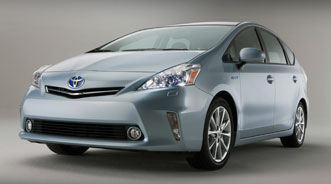Federal Government Reveals Used-Car Fuel Economy Labels; Will Dealers Adopt?

One of the prominent focuses of the Obama Administration has been its efforts to increase fuel efficiency and work on reducing the carbon footprint. These efforts have now turned toward the used-car market once again, following the 2009 Cash for Clunkers program.
The U.S. Energy Department and the Environmental Protection Agency released Thursday a new label that highlights EPA fuel economy estimates plus CO2 estimates for used vehicles sold in the U.S. since 1984.
With many consumers keeping fuel efficiency in mind while shopping, these tags might prove to be beneficial to dealers, if they choose to adopt, since the tags are fully optional for now.
Dealers can download these new labels at FuelEconomy.gov.
The online tool allows dealers and consumers looking to sell vehicles the ability to download the electronic graphic label as well as print the paper window — so the tool can be used for both online and on-lot advertising.
This move is similar to what is already offered in all new light vehicles, which now include a fuel economy and environmental window sticker from the EPA.
Commenting on the reasoning behind the new label, assistant secretary for energy efficiency and renewable energy David Danielson said: “Fuel-efficient vehicles cut carbon pollution, reduce our dependence on foreign oil and help American families and businesses save money.
“The new fuel-economy label gives consumers an easy, quick way to get the information they need to find the used vehicle that’s right for them,” he added.
Acting administrator for air and radiation Janet McCabe further stressed that the label is an effort to create transparency and make fuel economy information easier to find for consumers.
McCabe said, “Making fuel economy information more easily accessible can help Americans save money at the gas pump and reduce carbon pollution. Buying any vehicle is an investment, and the information on these labels will help consumers make informed decisions and calculate the cost of ownership.”
Point-of-Sale Disclosure
Douglas Greenhaus, chief regulatory counsel, environment, health and safety at the National Automobile Dealers Association, told Auto Remarketing that the labels and online offering may also prove helpful to dealers at point-of-sale.
Through the new offering, EPA has retroactively — going back to 1984 — harmonized all the fuel economy numbers for used vehicles so one can shop “apples-to-apples,” said Greenhaus.
But this isn’t just a plus for consumers.
Greenhaus said dealers can also benefit from being able to point consumers to FuelEconomy.gov and also go through numbers with them at the dealership to find the car with the gas mileage that best suits their lifestyle.
“Point-of-sale disclosure: a dealer can pull the numbers or advertise numbers online, and that’s great,” Greenhaus said.
Will Dealers Adopt?
Shortly after the news was released from the EPA, the Consumer Federation of America contended that the new offering will “dramatically change used-car buying.”
That is, if dealers choose to use the labels. But will the service remain optional if adoption rates are low?
The CFA explained that even though the offering is being advertised as optional, “that could change if dealers fail to adopt this easy-to-use consumer information program.”
Jack Gillis, CFA's director of public affairs, said, “Used-car dealers are being given the chance to jump on one of the most important rating programs available. If they fail to provide their customers with this easy-to-access information, the Consumer Federation of America will push hard to mandate the labels on every used car.”
And in a Q&A released by NADA, the organization explained that even though the label is optional, it suggests that it be used “if and when any claims are made regarding a used vehicle’s fuel economy.”
They also predicted that some OEMs may choose to suggest or require the use of the label with certified pre-owned vehicles.
Offering the perspective of the dealers, Greenhaus said, the main purpose of the used-car labels for dealers is to highlight fuel economy.
“So they aren’t necessarily going to use them for a 1990 Hummer, unless they are comparing it to something with even worse fuel economy,” he added.
And unlike the case for new 2013 light vehicles, which must have an EPA fuel economy label, these new labels are optional.
“When it’s optional, I don’t think they are going to be necessarily using the label to highlight a poor performer. The only time I can think that they would want to use the labels is when they are trying to enhance the marketability of a vehicle,” Greenhaus said. “What you’ll see if that some dealers may print out these labels for high gas mileage vehicles to try and reach what they believe is a segment of the marketplace that cares about fuel economy.”
Sarah Rubenoff can be reached at srubenoff@autoremarketing.com. Continue the conversation with Auto Remarketing on both LinkedIn and Twitter.


